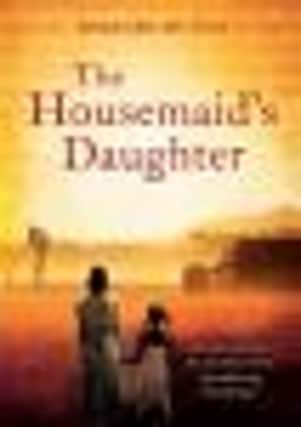Book review: The Housemaid’s Daughter by Barbara Mutch


Previously released as Karoo Plainsong, this fully revised and utterly absorbing tale of love, friendship and redemption tackles head on the cruelty and barbarism of racial segregation in the middle decades of the 20th century.
With a captivating blend of eloquence, insight and integrity, South African-born Mutch transports us to a defining and degrading chapter in that country’s history when the colour of a man or woman’s skin marked out their destiny.
Advertisement
Hide AdAdvertisement
Hide AdHer humble narrator, housemaid’s daughter Ada Mabuse, becomes a powerful symbol for marginalised black women, an example of the strength of the human spirit in the face of adversity and a role model for those who face oppression in all corners of the world.
Ada’s abiding friendship with her white Irish-born ‘mistress’ crosses the huge divide, breaks down barriers and sets in motion changes that bring hope for the future...
Cathleen Harrington leaves her home in Ireland in 1919 to travel to South Africa and marry her fiancé Edward, a man she has not seen for five years.
Despite the births of her two children, Phil and Rose, Cathleen feels isolated and estranged at Cradock House in the great semi-desert of Karoo and starts to find solace in her diary and the friendship of her housemaid Miriam’s young daughter Ada.
Advertisement
Hide AdAdvertisement
Hide AdBorn in 1930 in her mother’s kaia under the bony shade of a thorn tree at the back of the big house, Ada feels a part of the fabric of the place.
And Cathleen recognises in her someone she can love and respond to in a way that she cannot with her husband and her own daughter. ‘She made me feel like I was hers,’ says Ada.
Under Cathleen’s tutelage, Ada grows into an accomplished pianist, and a reader who cannot resist turning the pages of Madam’s diary, discovering cryptic messages and secrets that Cathleen has tried to hide. Musical notes, Ada discovers, are like words. ‘They meant one thing when played on their own, and quite another when strung together.’
When Ada is compromised and finds she is expecting a mixed-race child – one who ‘belongs nowhere... who falls in between’ – she flees her home, determined to spare Cathleen the knowledge of her betrayal, and the disgrace that would descend upon the family.
Advertisement
Hide AdAdvertisement
Hide AdOstracised and derided within her own township community, Ada is forced to carve out a life for herself, her child and her music.
But Cathleen still believes in Ada, and risks the constraints of apartheid to search for her and persuade her to return with her daughter. Beyond the separation and the segregation, there is hope for a new generation.
The Karoo region’s beautiful but unforgiving landscape, and the music which is the soul of Ada’s friendship with Cathleen, provide a symphony of vivid colour and harmony as the background to this exquisite and heart-rending story which captures time and place with consummate skill and blistering honesty.
(Headline Review, paperback, £7.99)